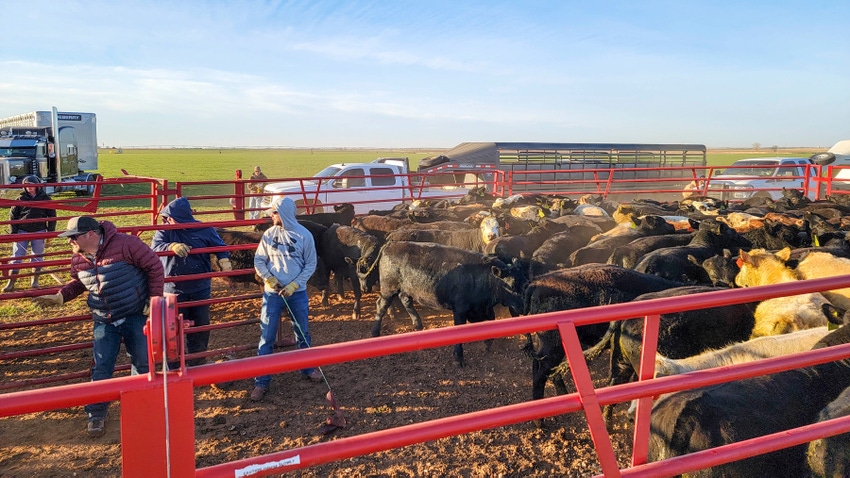Comprehending Livestock Threat Defense (LRP) Insurance: A Comprehensive Guide
Navigating the realm of animals threat defense (LRP) insurance policy can be a complex venture for several in the agricultural market. This kind of insurance policy provides a safeguard against market variations and unexpected conditions that could affect animals producers. By comprehending the intricacies of LRP insurance coverage, manufacturers can make enlightened decisions that might protect their operations from monetary threats. From how LRP insurance coverage works to the numerous insurance coverage options available, there is much to discover in this detailed overview that can possibly form the way livestock producers approach danger monitoring in their organizations.

Exactly How LRP Insurance Functions
Occasionally, recognizing the mechanics of Livestock Risk Security (LRP) insurance can be complex, however breaking down just how it functions can give quality for ranchers and farmers. LRP insurance is a danger administration device developed to secure livestock manufacturers versus unexpected cost decreases. It's vital to keep in mind that LRP insurance coverage is not an earnings warranty; rather, it focuses solely on rate threat security.
Eligibility and Protection Options
When it comes to protection alternatives, LRP insurance coverage offers producers the adaptability to choose the coverage degree, insurance coverage period, and endorsements that ideal match their danger administration requirements. Protection levels typically range from 70% to 100% of the anticipated ending value of the insured animals. Manufacturers can likewise choose protection durations that line up with their manufacturing cycle, whether they are insuring feeder livestock, fed cattle, swine, or lamb. Endorsements such as cost threat defense can additionally customize protection to secure against unfavorable market variations. By recognizing the qualification criteria and insurance coverage alternatives readily available, animals producers can make enlightened choices to take care of risk efficiently.
Pros and Disadvantages of LRP Insurance Coverage
When reviewing Animals Danger Defense (LRP) insurance coverage, it is essential for livestock producers to consider the negative aspects and benefits inherent in this risk management tool.

One of the primary advantages of LRP insurance is its capacity to give defense against a decrease in animals prices. Additionally, LRP insurance policy offers a level of versatility, allowing producers to personalize coverage levels and plan periods to match their particular demands.
Nonetheless, there are likewise some disadvantages to take into consideration. One restriction of LRP insurance policy is that it does not protect versus all sorts of dangers, such as disease outbreaks or natural catastrophes. Additionally, costs can often be expensive, especially for producers with huge animals herds. It is important for producers to very carefully examine their private danger direct exposure and monetary situation to identify if LRP insurance is the right threat monitoring device for their operation.
Recognizing LRP Insurance Premiums

Tips for Making The Most Of LRP Perks
Making best use of the benefits of Livestock Risk Defense (LRP) insurance policy requires calculated preparation and proactive risk administration - Bagley Risk Management. To maximize your LRP protection, think about the adhering to suggestions:
Routinely Evaluate Market Problems: Stay informed about market trends and rate changes in the animals market. By monitoring these variables, you can make educated decisions about when to acquire LRP insurance coverage to secure versus potential losses.
Establish Realistic Insurance Coverage Degrees: When picking coverage degrees, consider your production costs, market price of animals, and prospective threats - Bagley Risk Management. Establishing practical protection degrees guarantees that you are effectively protected without overpaying for unnecessary insurance
Diversify Your Protection: As opposed to relying entirely on LRP insurance coverage, consider diversifying your risk monitoring strategies. Incorporating LRP with various other threat monitoring devices such as futures agreements or choices can provide extensive coverage against market unpredictabilities.
Review and Change Protection Regularly: As market problems change, regularly examine your LRP coverage to ensure it lines up with your existing risk direct exposure. Adjusting insurance coverage levels and timing of acquisitions can help maximize your threat defense approach. By following these ideas, you can optimize the benefits of LRP insurance coverage and guard your livestock procedure versus unanticipated dangers.
Verdict
In conclusion, animals risk protection (LRP) insurance coverage is a useful tool for farmers to handle the economic dangers linked with their Read Full Article animals procedures. By understanding exactly how LRP works, eligibility and protection alternatives, along with the advantages and disadvantages of this insurance coverage, farmers can make educated choices to secure their source of incomes. By thoroughly taking into consideration LRP costs and carrying out strategies to maximize advantages, farmers can minimize potential losses and make certain the sustainability of their procedures.
Animals manufacturers interested in getting Livestock Risk Defense (LRP) insurance policy can explore a range of eligibility standards and coverage choices customized to their details livestock procedures.When it comes to coverage choices, LRP insurance offers manufacturers the versatility to choose the insurance coverage level, coverage duration, and endorsements that finest suit their danger management demands.To grasp the details of Livestock Threat Security (LRP) insurance coverage fully, understanding the factors affecting LRP insurance policy costs is essential. LRP insurance coverage costs are figured out by various elements, consisting of the coverage degree picked, the anticipated cost of livestock at the end of the insurance coverage duration, the kind of livestock being guaranteed, and the size of the coverage duration.Testimonial and Readjust Coverage Regularly: As market conditions transform, Learn More Here occasionally review your LRP protection to ensure it lines up with your current risk direct exposure.